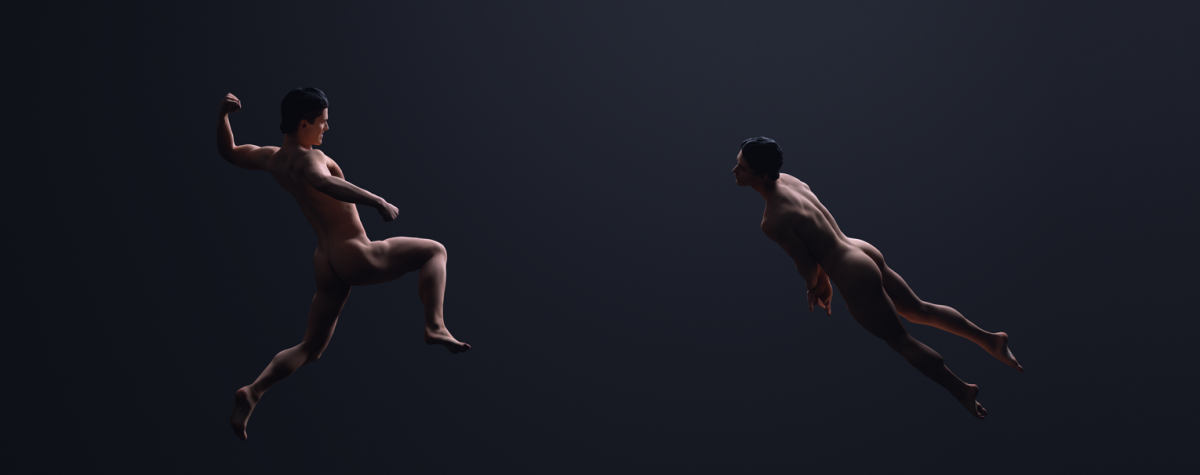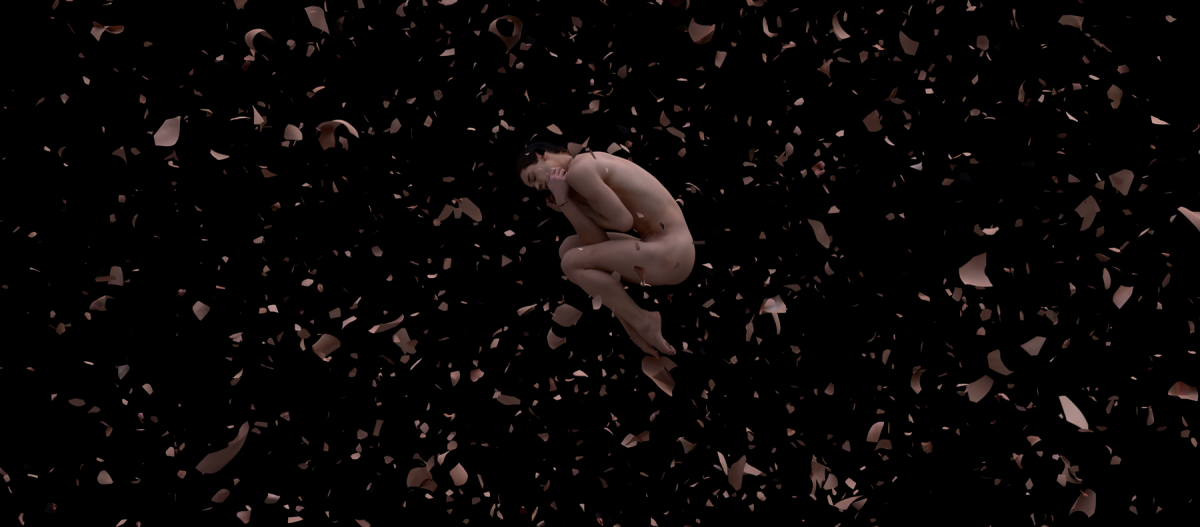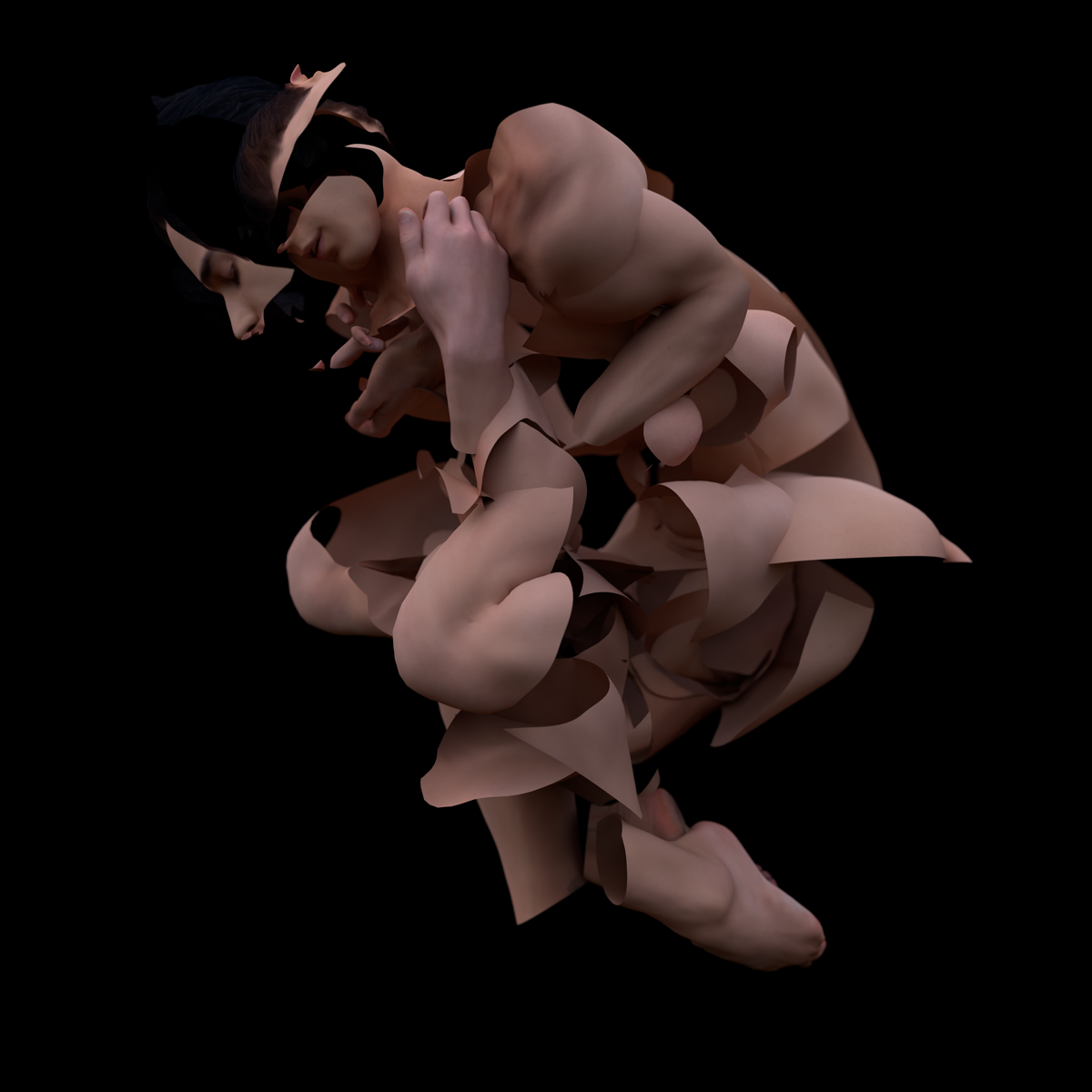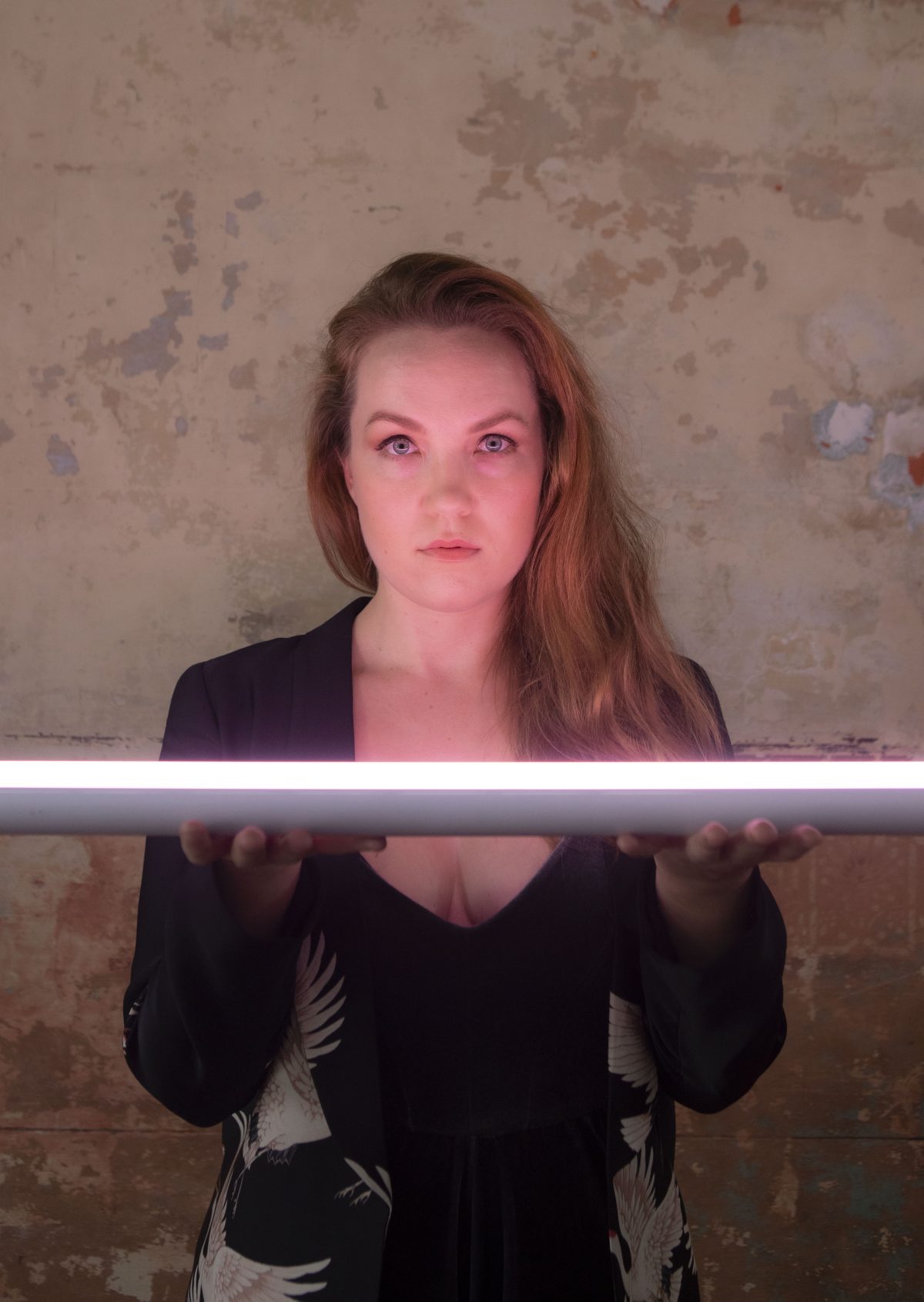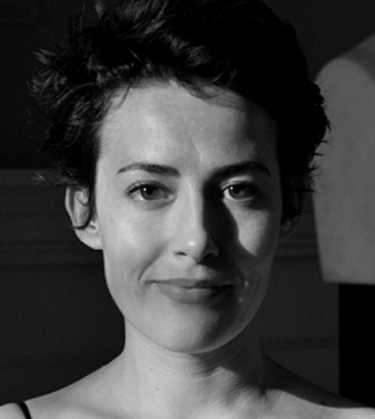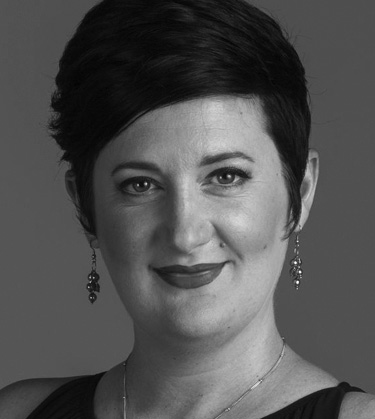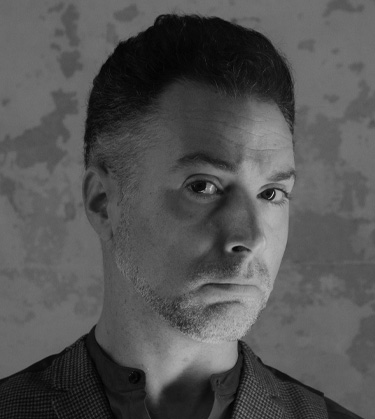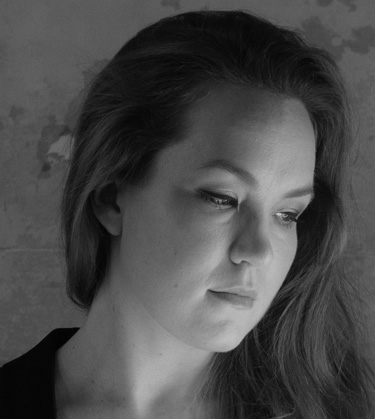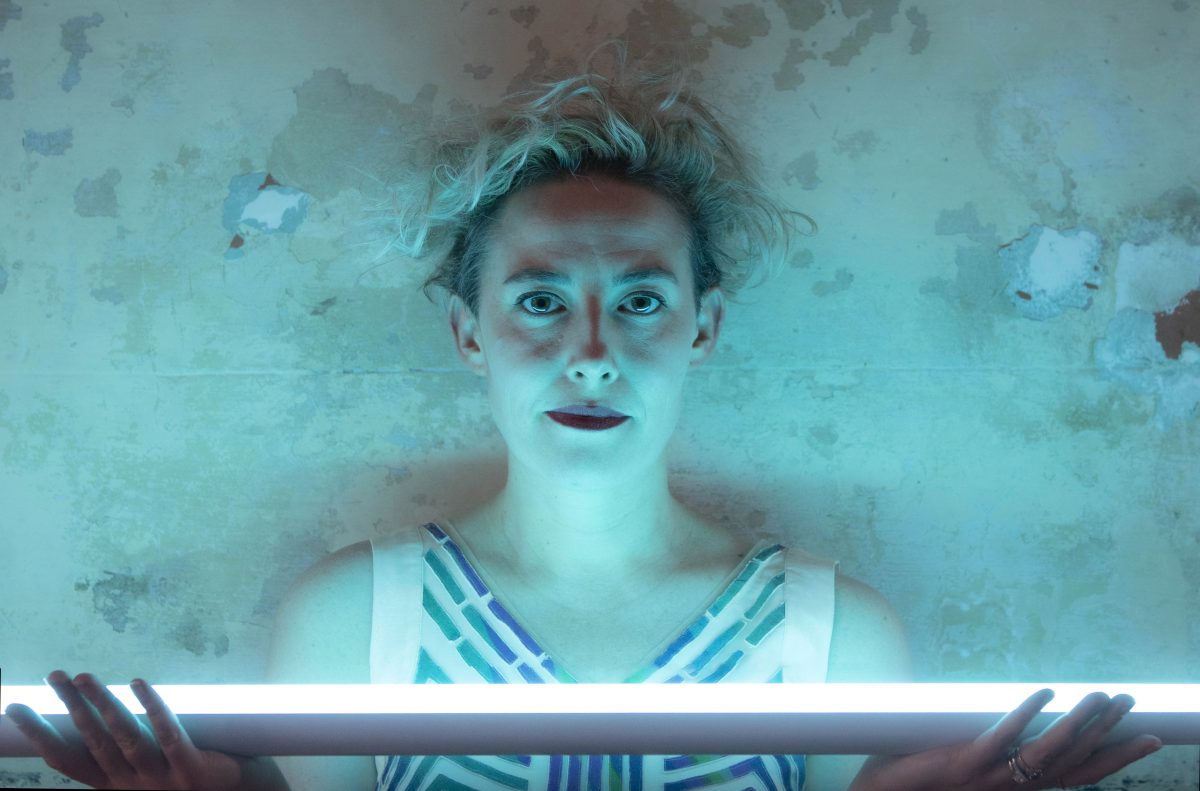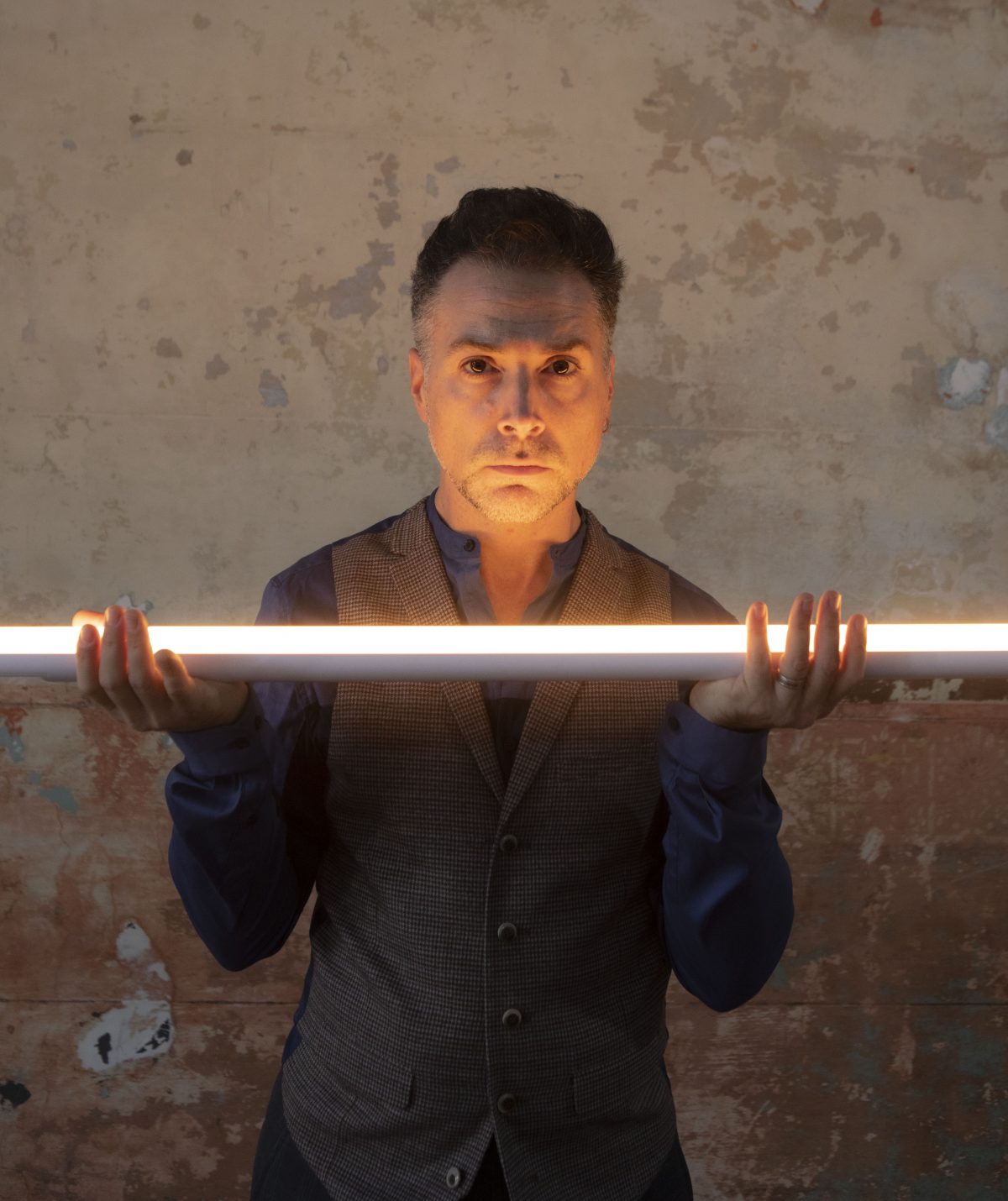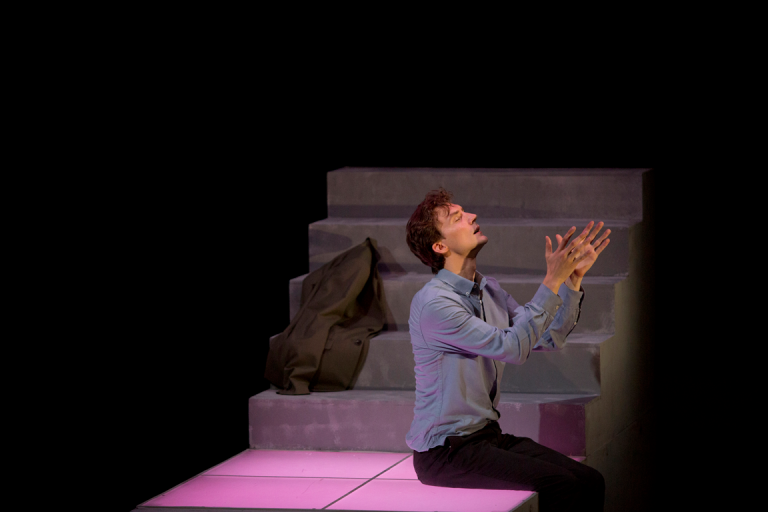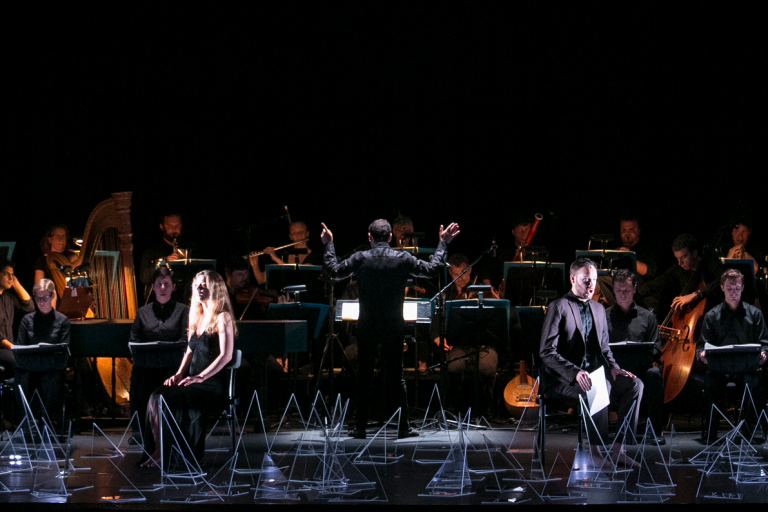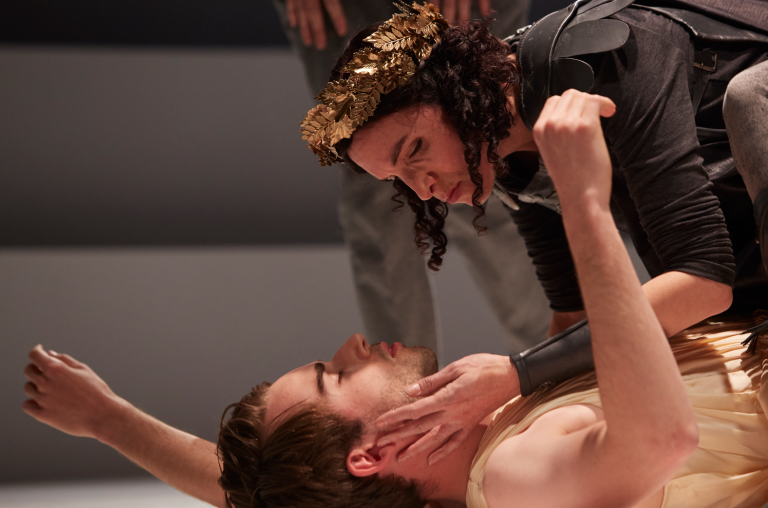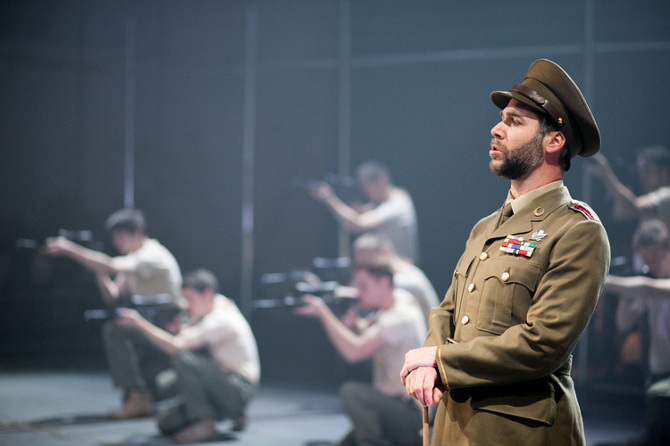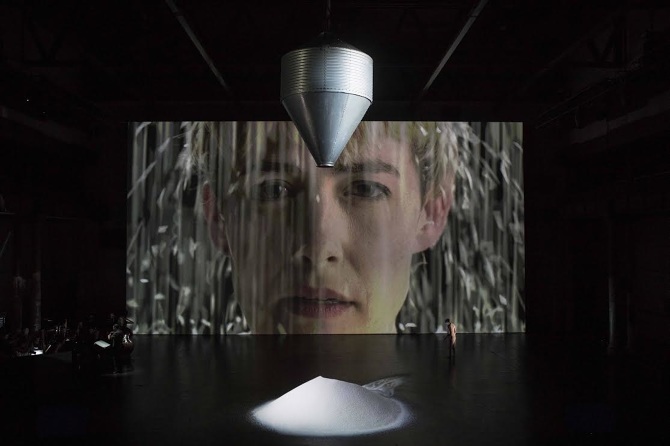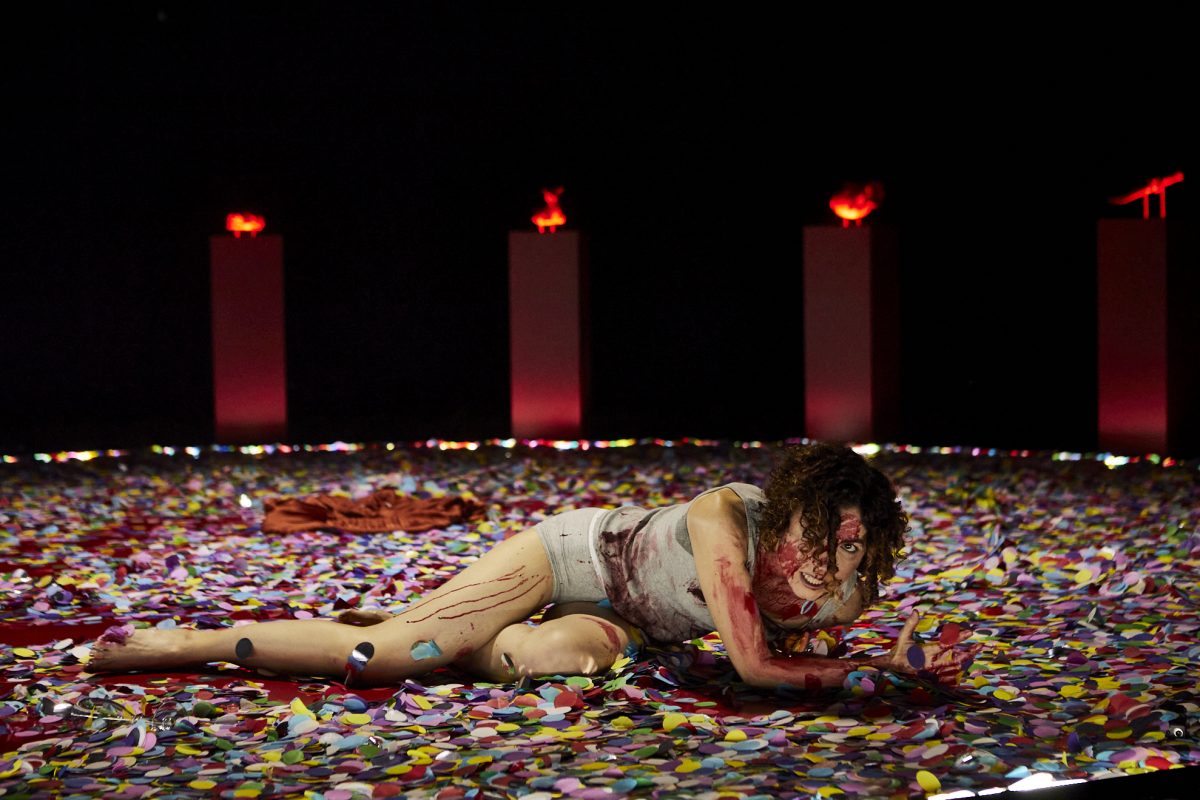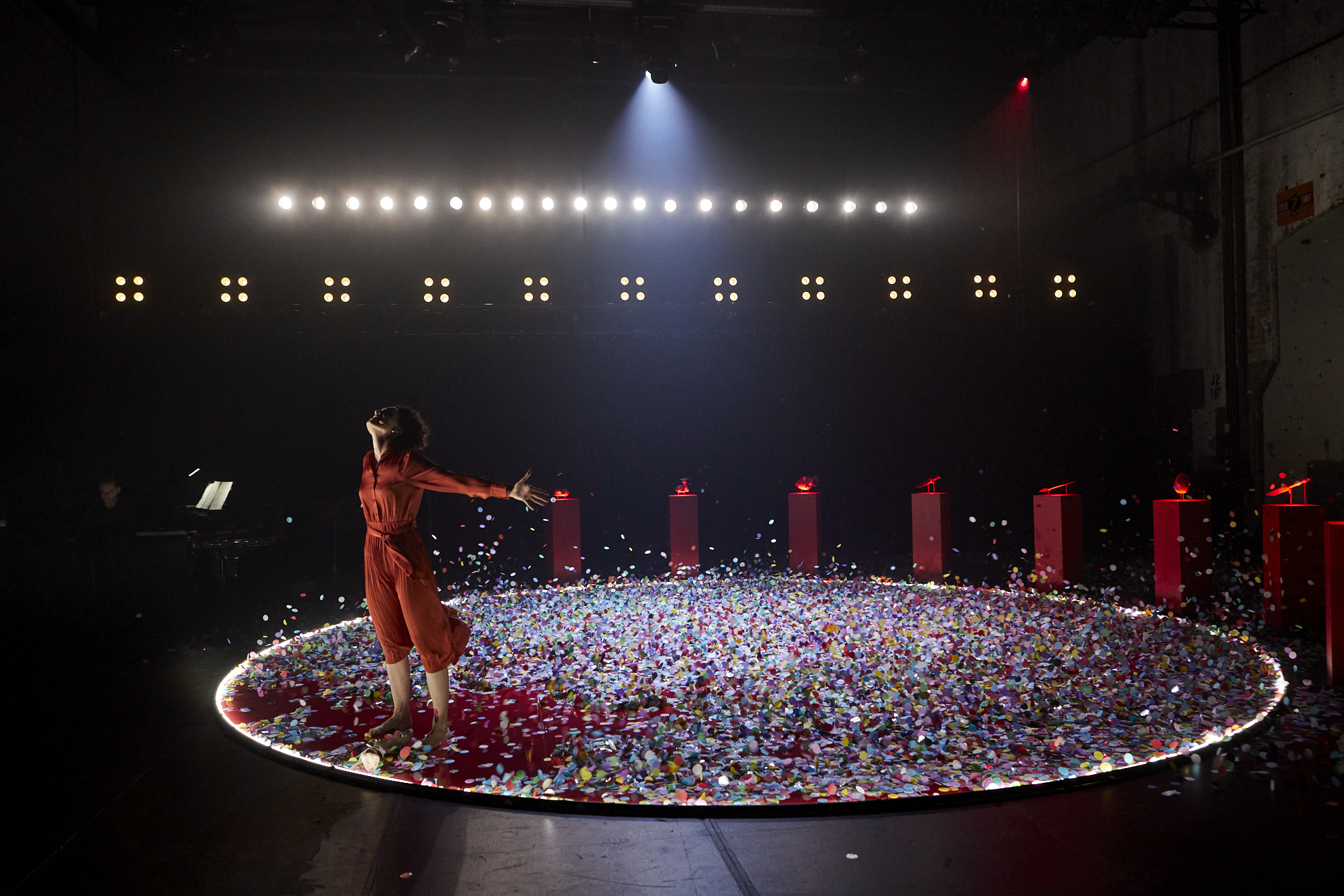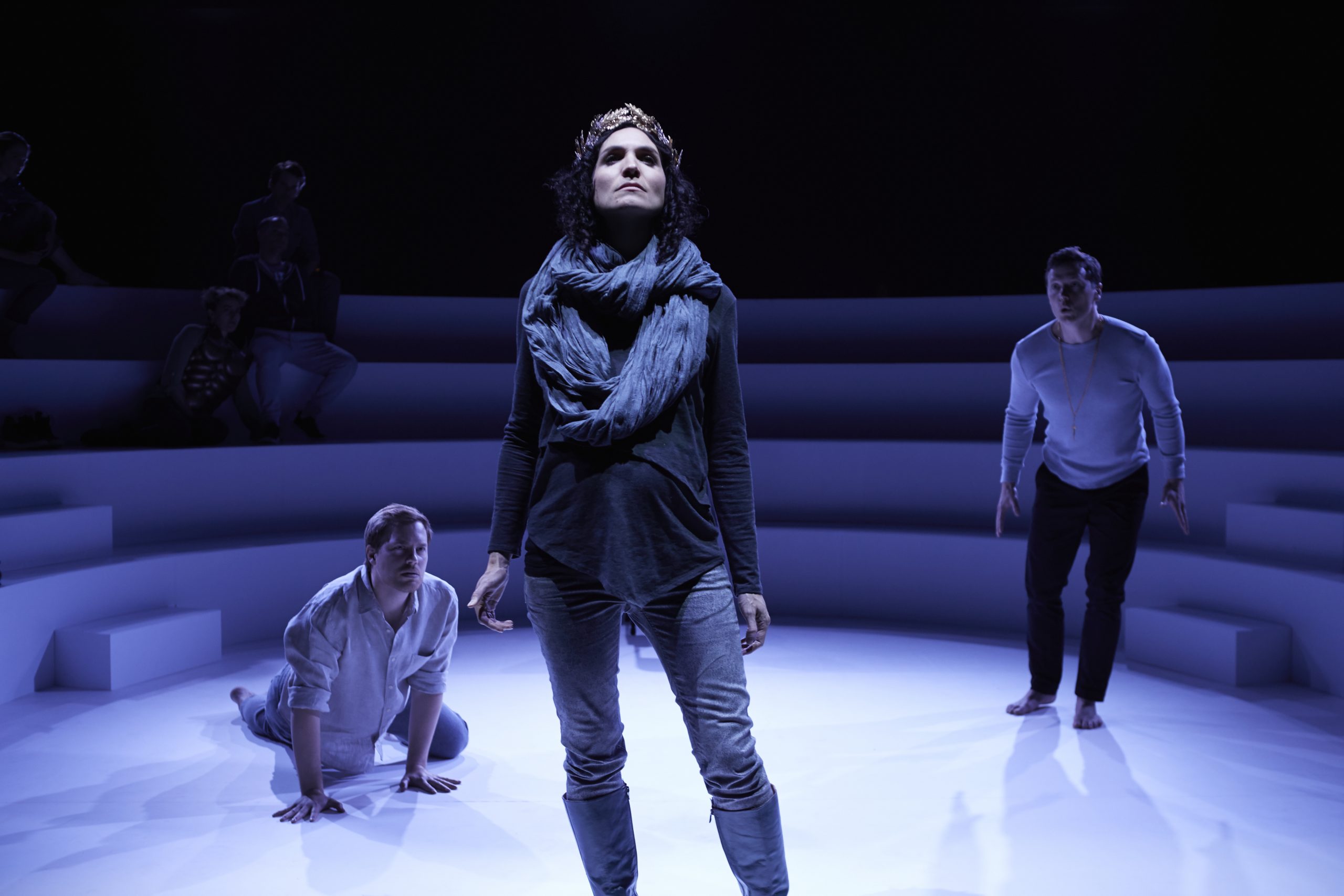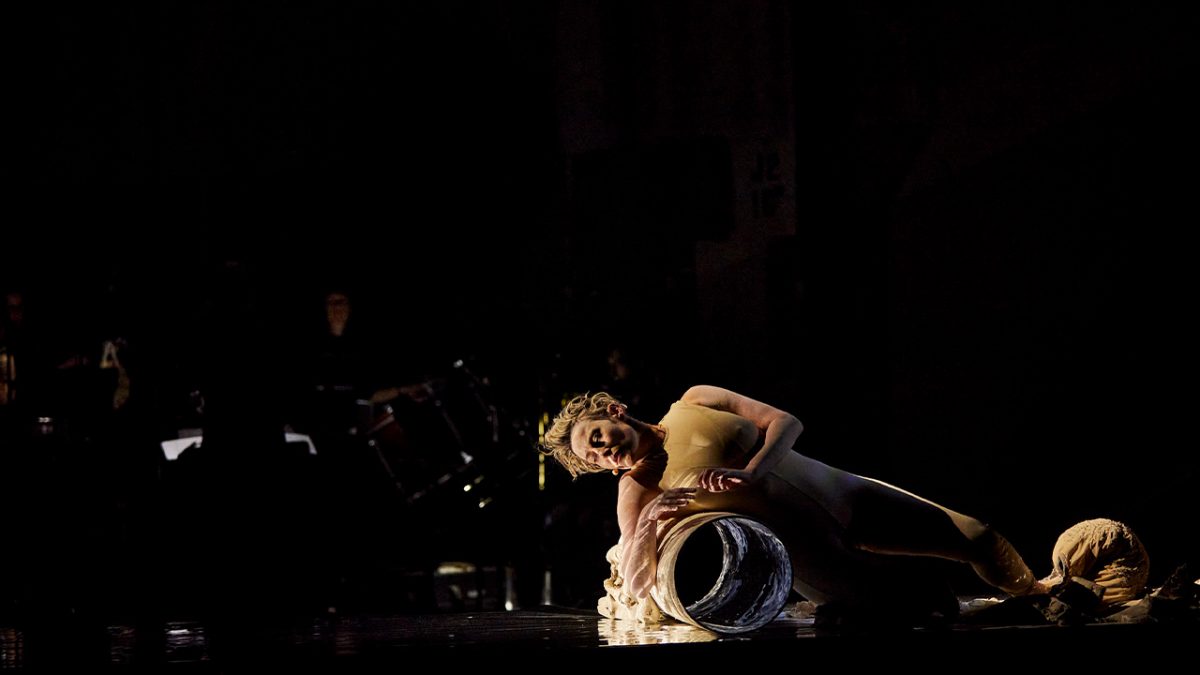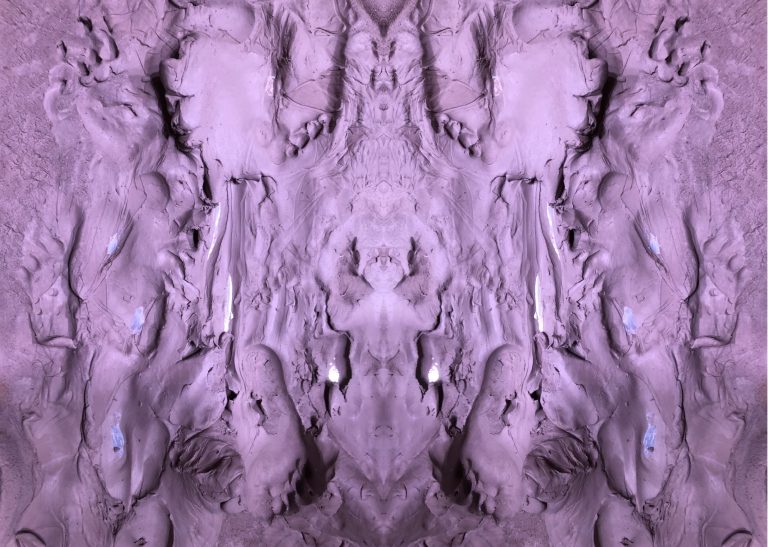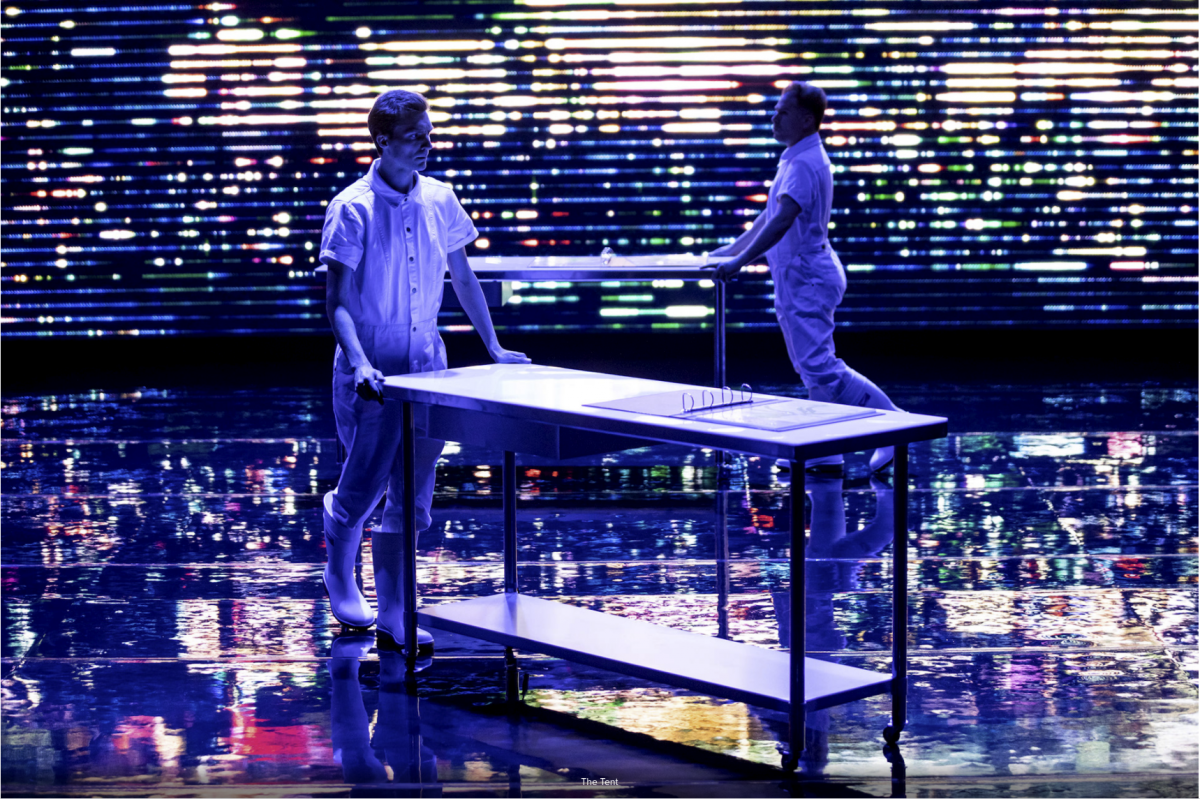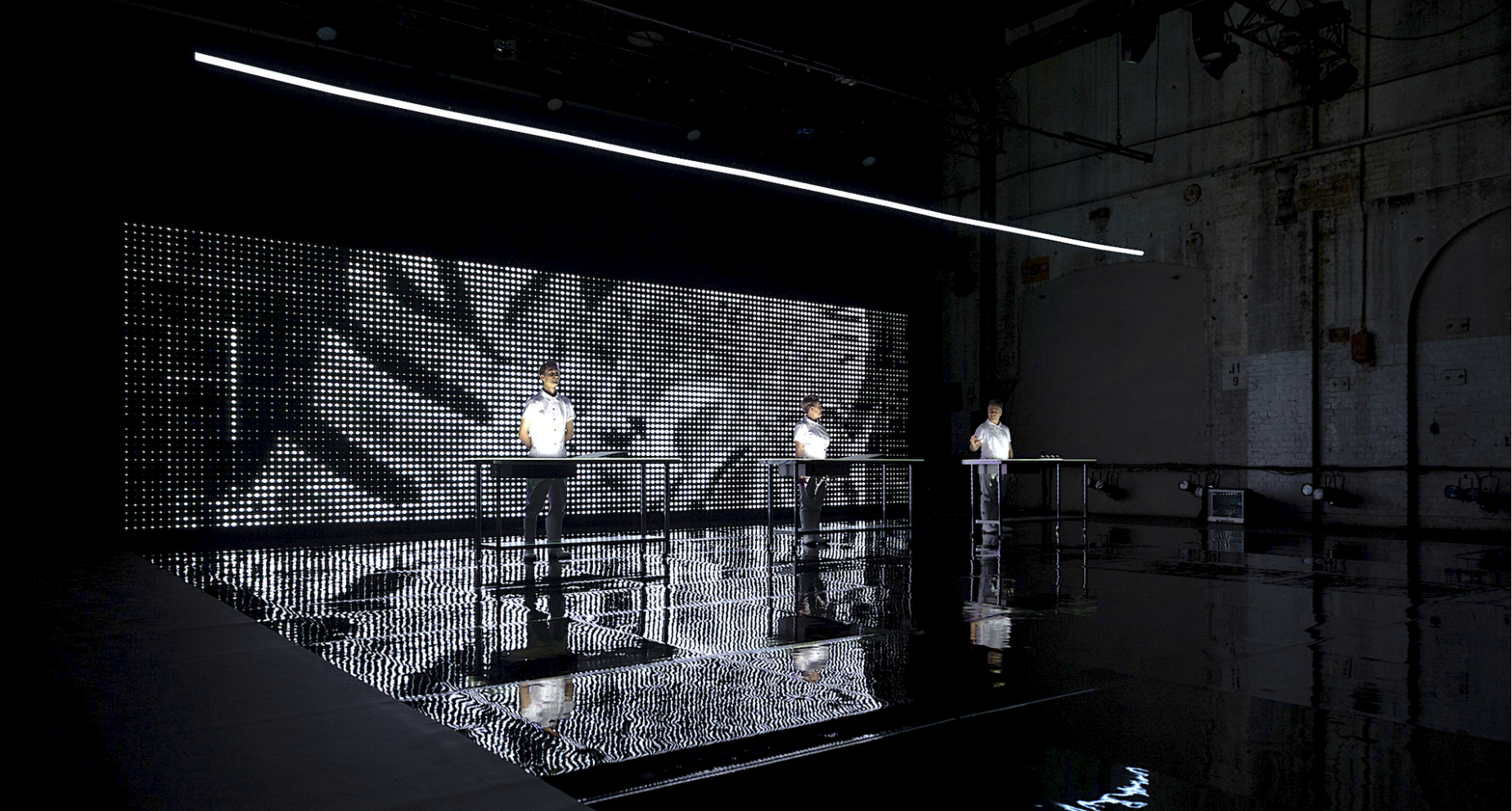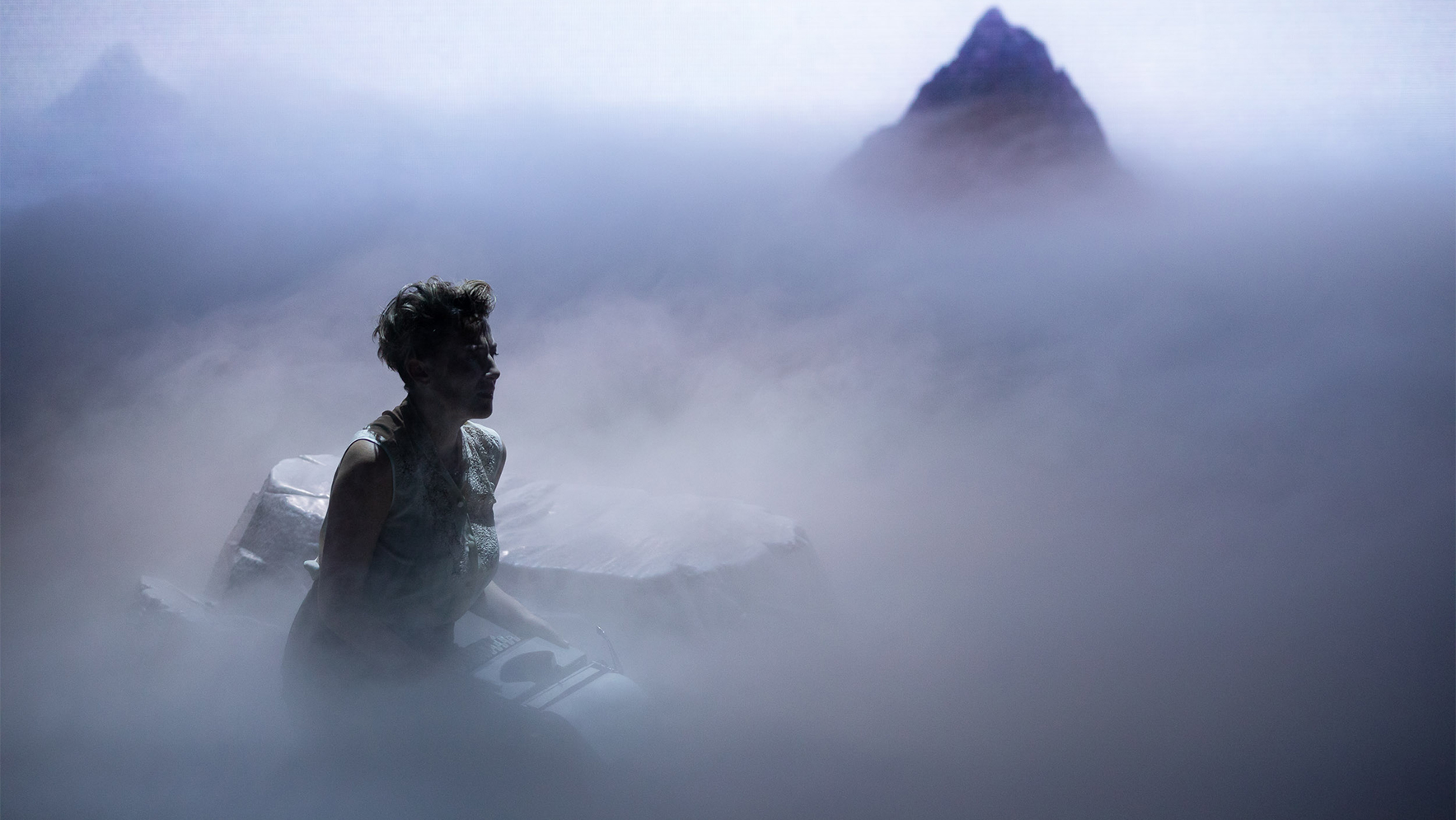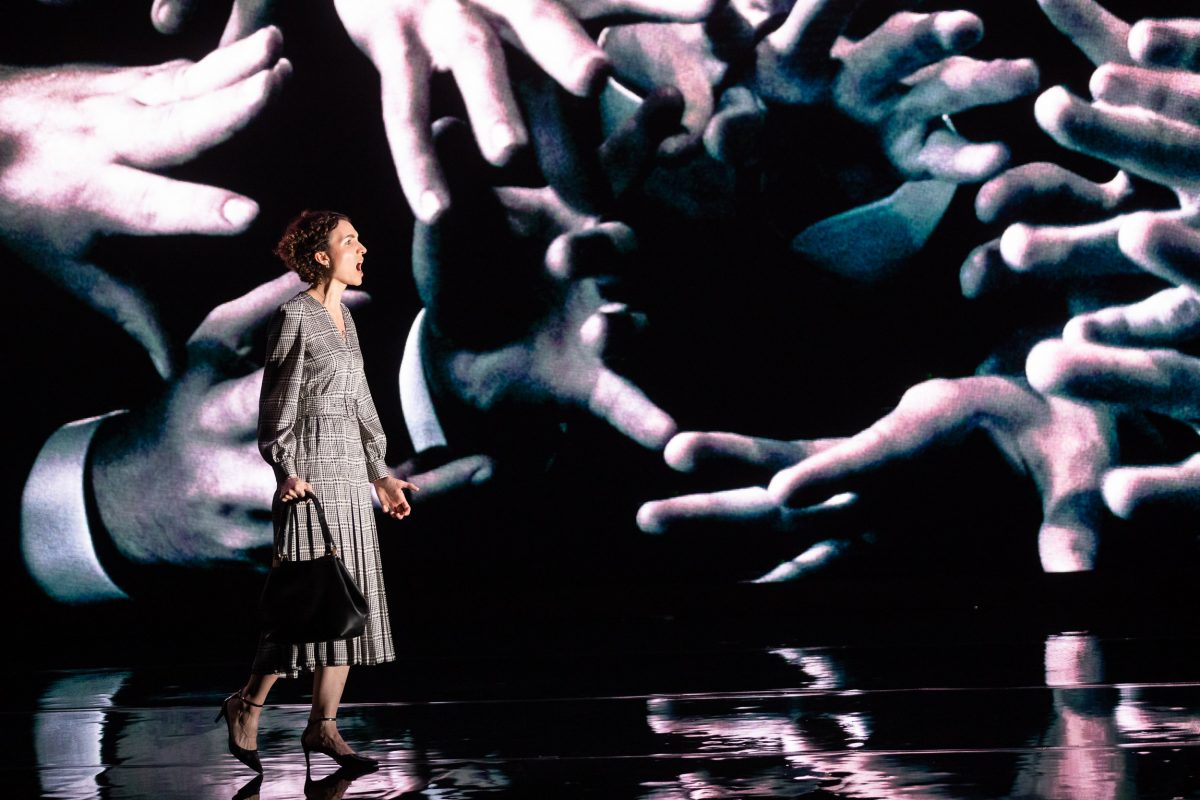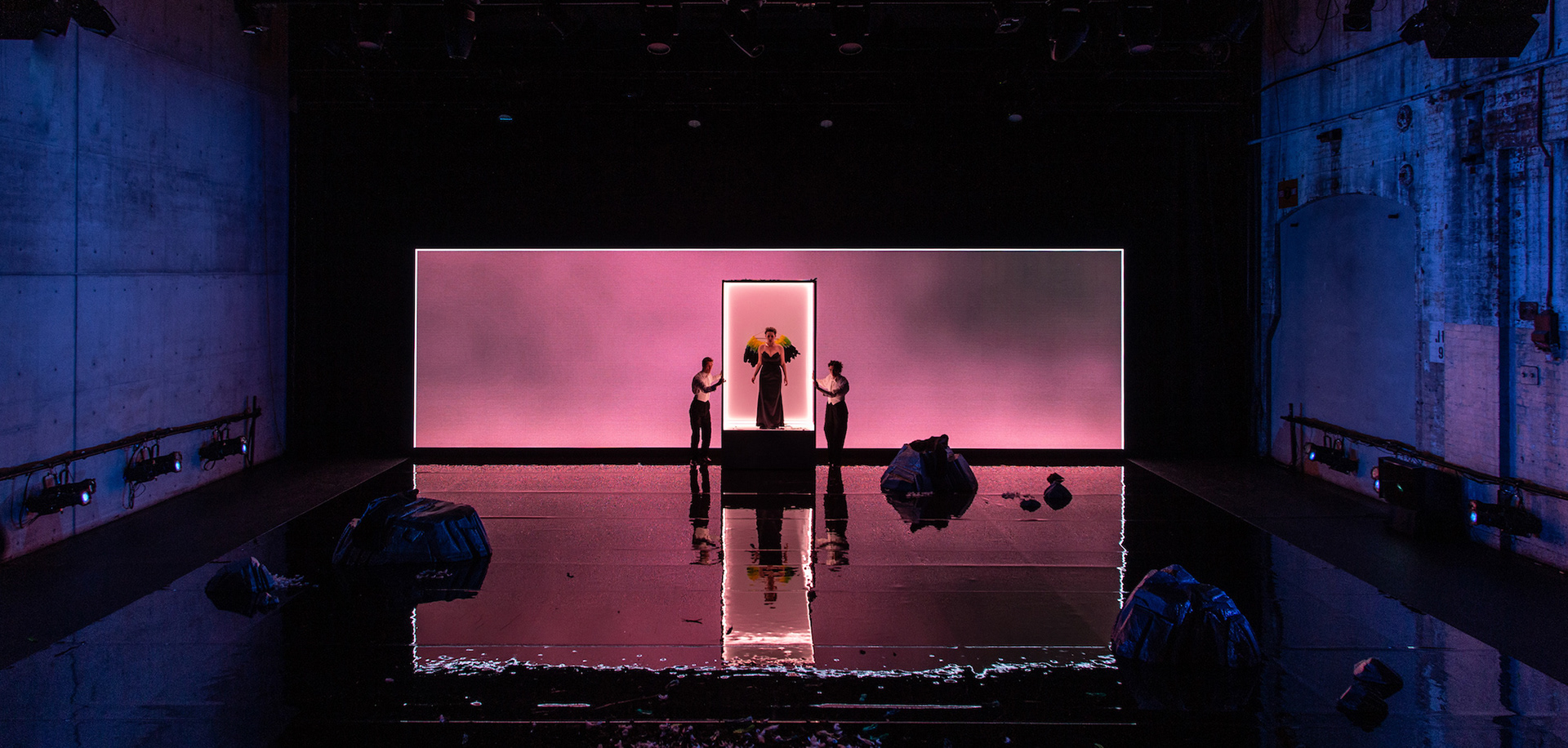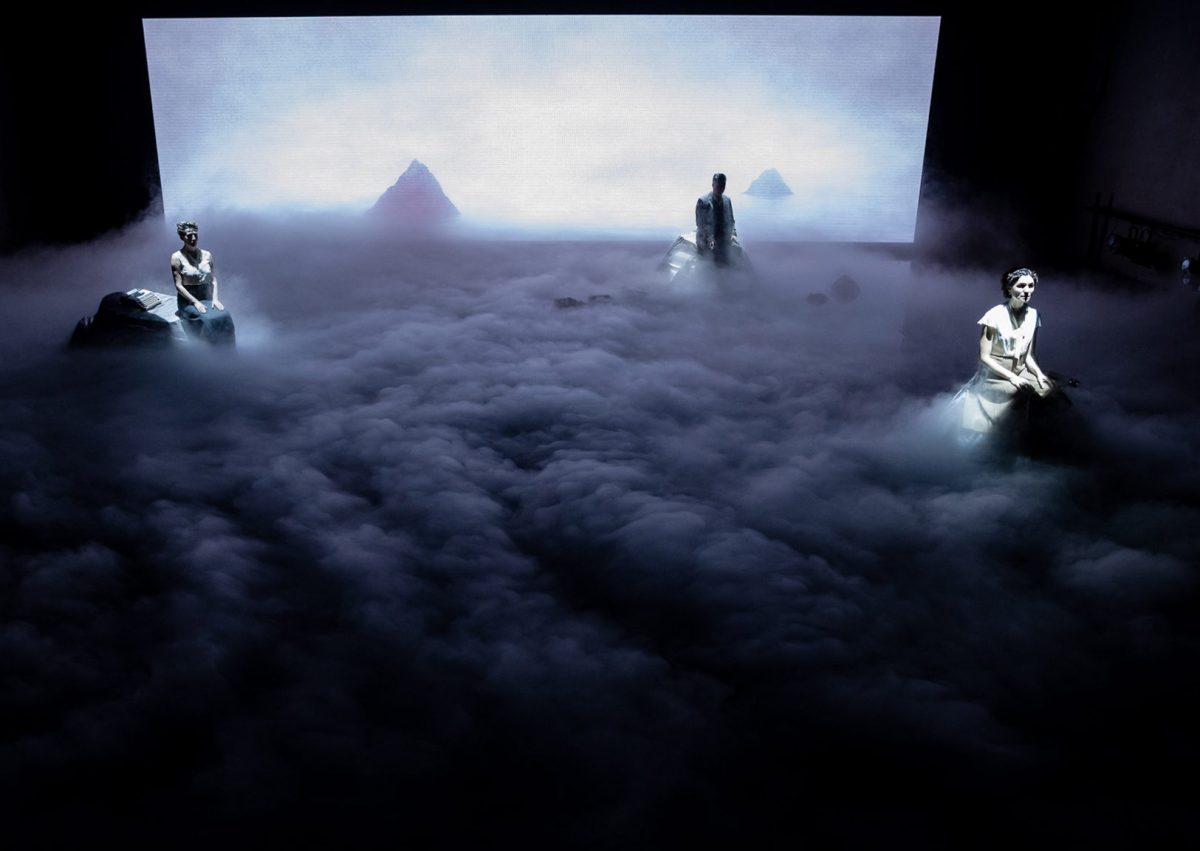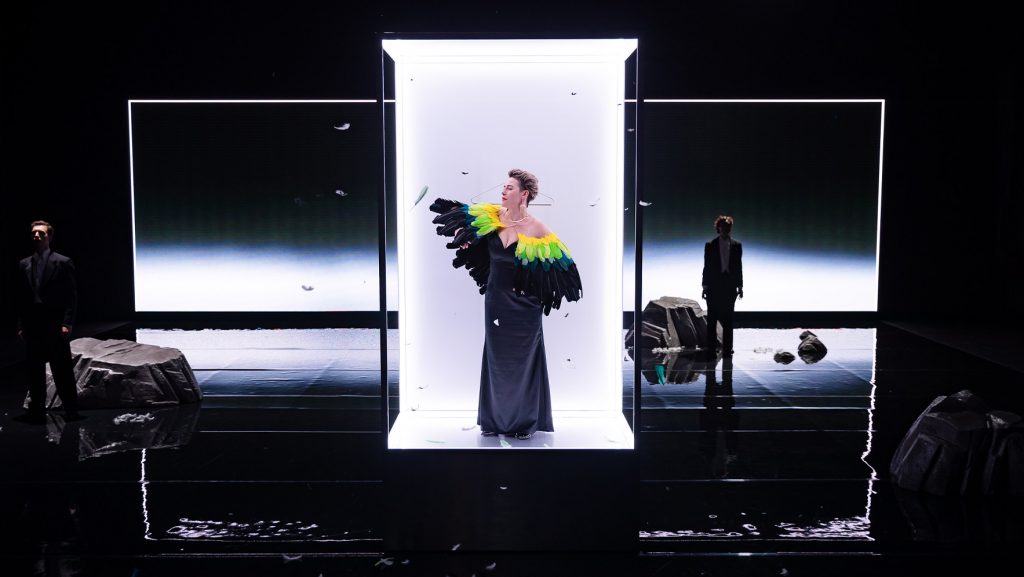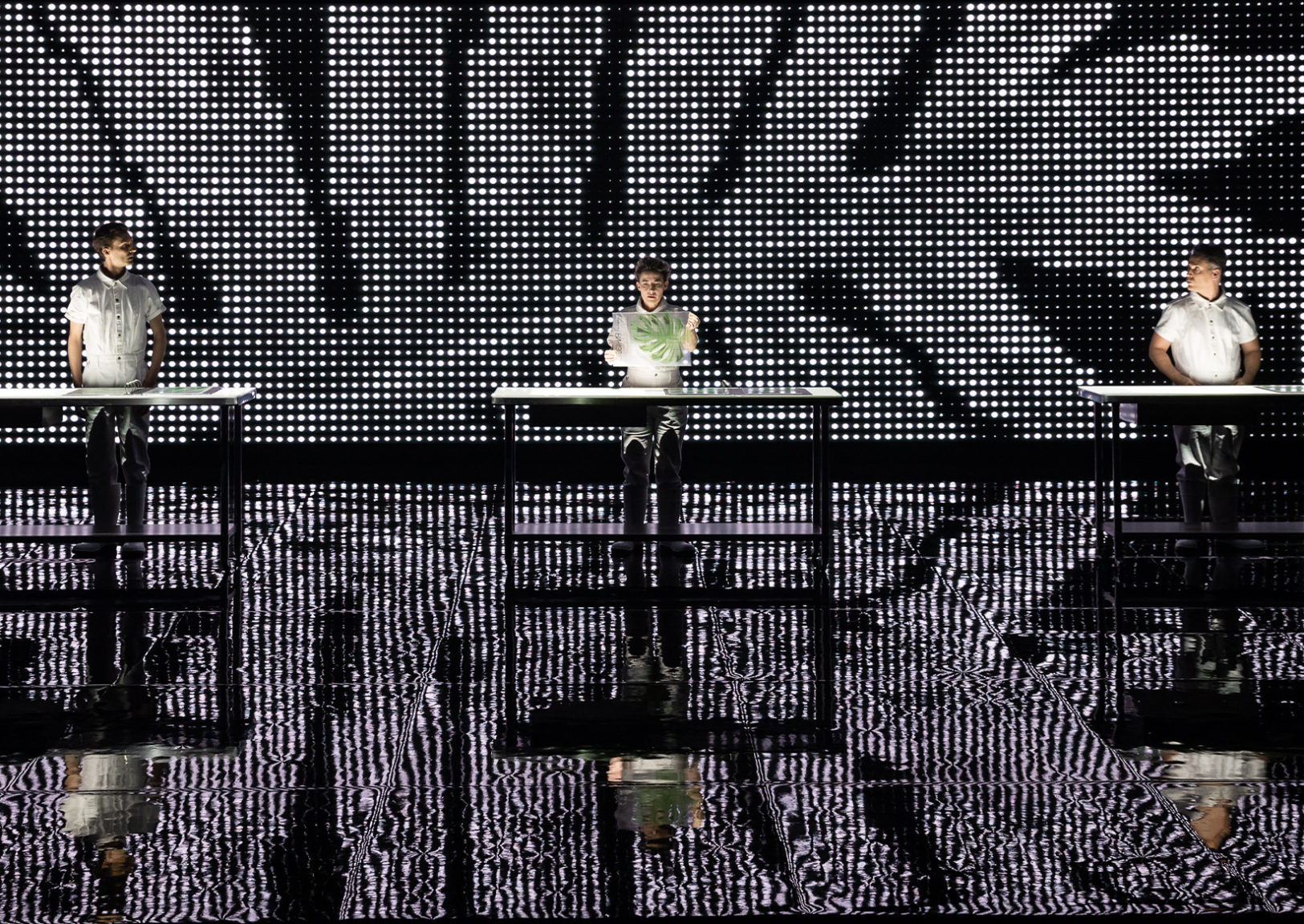Four Questions for director imara savage
Awakening Shadow‘s Director talks about making innovative stage work.
1. How do you approach conceiving a staging for a production consisting of works by two composers where none of the material is conventionally operatic or dramatic?
We made the decision quite early on that we wouldn’t try to turn this into an ‘opera’ in a more conventional sense, by which I mean a “story” with “characters”.
Benjamin Britten’s five Canticles were not intended to be staged together in that way, and what was clear to me was that the themes, ideas and poetry are what create the dramatic arc of the work. As a creative team, we leaned into the historical form of the ‘Canticle’, and committed to an exploration of belief, passion and ritual. We talked a lot about Britten’s own relationship to faith and how that evolved through his music over his life – and from that we developed a loose arc of storytelling.
We then turned to the material that Luke Styles has composed to intersect Britten’s Canticles. Whilst Luke’s work is a direct response, it operates on a different textural plane. We were most struck by Luke’s exploration of the themes of light and dark, and the failure of language to communicate. Luke’s work uses all three singers from the Canticles and adds a soprano (Jane Sheldon), so we talked about the idea of a ‘chorus’ and how that might operate.
Whilst all this material is not conventionally dramatic in the way an ‘opera’ is (with stories and characters etc), there are indeed characters that emerge in the Britten even if only for the duration of one canticle (Abraham/Isaac/God/Narcissus/The Magi) – and you can’t really ignore them because they’re so recognisable!
On top of this, there is a kind of narrator (the tenor Brenton Spiteri) who leads us through the work, as well as the ‘chorus’ in Luke’s responses. From these ingredients and through research into Britten’s own evolving relationship with faith we then figured out what each piece was and how it fitted into the whole.
2. What thematic threads do you trace throughout the Britten Canticles and how do you go about realising these visually?
When first approaching the Britten, we listened to and read the text (poetry) again and again. We talked about the distilled quality of the works, how they felt like perfectly conceived miniatures reduced to their most potent form. There was no fat on any of them. What was also impossible to get away from was the religious imagery, and these Biblical/mythical characters or stories that have emerged from the Western canon. Sculpture was, in fact, the form we talked about being closest to representing Britten’s music, because it has the feeling of being a suspended moment captured in time. This led us, in turn, to the film technique of photogrammetry that filmmaker Mike Daly has used to create the visual language of the video work.
The arc of the whole derived mainly from interrogating the text for themes and charting Britten’s complicated relationship with faith over the course of his music and life, as he grappled with his Church’s stance on homosexuality, as well as on war and state- sanctioned violence. Very present in Britten’s art was the male body: love between men, violence and men, and binaries or certainties that moved towards a questioning of both self and belief. Coupled with this is a kind of simultaneous death, or annihilation of old systems and a re-birth to make way for something new – such as represented by the Magi in Canticle IV.
Canticle V, ‘The Death of Saint Narcissus’ always felt so radically different to the other works in tone, and had a kind of anarchic abandon. So we knew that was the end point of the work and that it felt very physically embodied and more performative than the other Canticles for our tenor, Brenton Spiteri. We knew he ended up as a flower in this Canticle – and our end point was the pool of Narcissus, so we reverse- engineered the rest from that point.
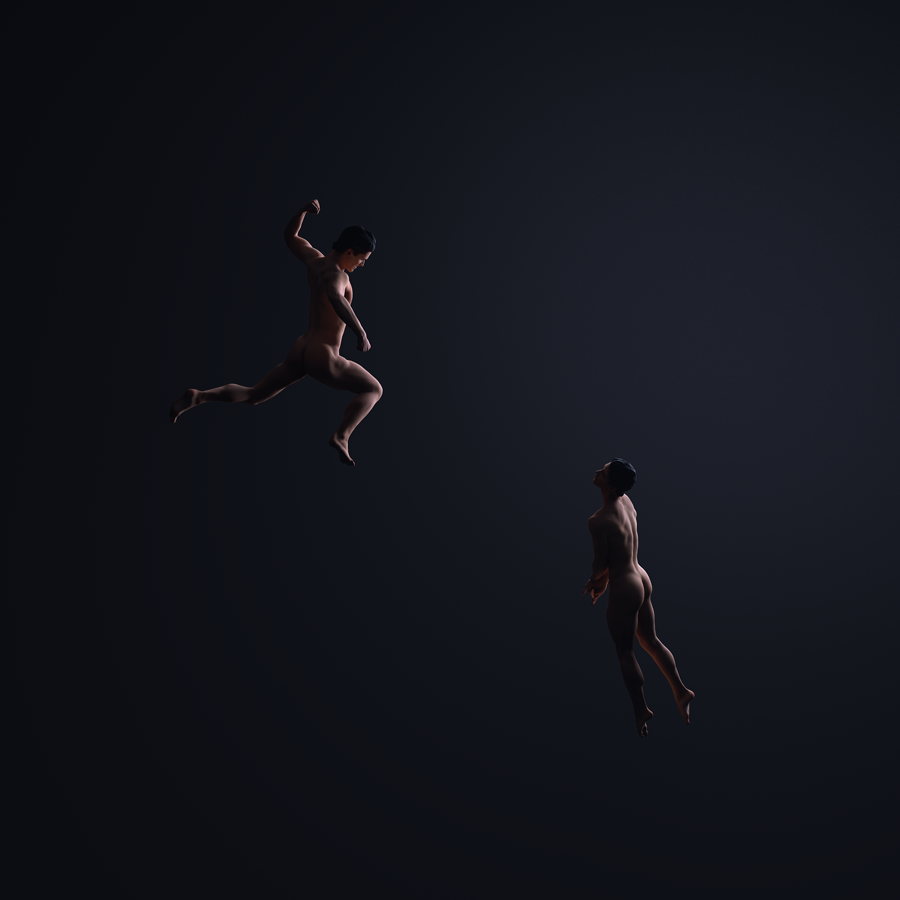
"Very present in Britten's art was the male body: love between men, violence and men, and binaries or certainties that moved towards a questioning of both self and belief. Coupled with this is a kind of simultaneous death, or annihilation of old systems and a re-birth to make way for something new..."
3. What is the process of collaboration with set/costume designer Elizabeth Gadsby, filmmaker Mike Daly and lighting designer Alex Berlage? How do their aesthetics feed into your own vision?
I work very closely with my collaborators and these artists in particular- they all bring ideas to the table and we kick them around for a very long time (even longer this time because this production was delayed by Covid). Over time the ideas seem to evolve of their own accord and finally land somewhat organically – I think because of the sheer amount of discussions that have taken place. Mike Daly and Alex Berlage are both successful directors in their own right so they think about the work very holistically – as does Elizabeth Gadsby. Elizabeth and I in particular would have countless conversations (over a period of years in this case) and by the end I couldn’t honestly say whose idea was whose. The roles of director and designer feel almost arbitrary at this point. I think we just keep interrogating the work and challenging each other’s thinking until we are both satisfied that we have landed on the right idea.
I will also add that the other very significant part of the collaboration is the one that happens in the room with the performers and Jack Symonds the music director – they are also collaborators, because the rehearsal room always yields big discoveries. I’m lucky enough to work with a company, creatives and a group of performers who thrive on that kind of ongoing exploration in the room and are not afraid to make big changes to accommodate the work.
4. How does this production fit into the progression and evolution of your own work?
I do love a good story but much of the work that I have done with Sydney Chamber Opera hasn’t fallen into this category, meaning it’s not plot or character driven. This then requires a different kind of dramaturgy. There is more invention in this kind of work because it could literally take place anywhere and sometimes not even the ‘characters’ are defined.
It then becomes all about who they are and where they are at any given moment – and also how you go about creating meaning! I suppose much of the work I am doing with Sydney Chamber Opera could be categorised as ‘post dramatic’, where story and character aren’t centralised the way they might be in a traditional story.
In post- dramatic work there is more imposition from the creative team, it’s more auteur- driven and less ‘writer- driven’.
Consequently, there is a lot of work done with the creative team in the pre-production phase where we sit and talk about what holds the storytelling at any given moment: is it light, gesture, performers, video? I find it much harder working in this way – it’s more exposing because everything is an act of invention, and it’s hard to tell whether it will work until tech week. However, I find this kind of work pretty exciting!
Keep in touch
General Inquiries
- contact@sydneychamberopera.com
-
SCO, Carriageworks
PO Box 3035 Redfern, NSW 2016
Postal Address -
SCO, Carriageworks
245 Wilson St Eveleigh, NSW 2015
Resident Address - (02) 8571 9106
